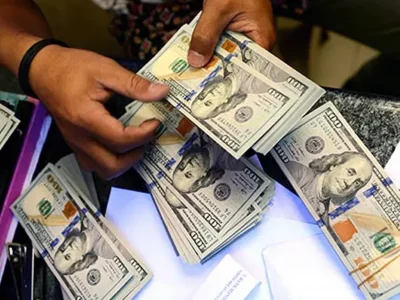
FINANCE Secretary Ralph G. Recto has assured the House of Representatives that the government is on-track to achieving its targets under the refined Medium-Term Fiscal Program that gradually reduces deficit and debt, creates more jobs, increases incomes, and reduces poverty.
“[W]hen I took on the Finance Secretary hat, my first priority was to recalibrate our growth and fiscal targets to ensure that they are achievable and adaptable to external shocks. Our refined Medium-Term Fiscal Program reduces our deficit and debt gradually in a realistic manner; while creating more jobs, increasing our people’s incomes, and decreasing poverty in the process,” he said during the FY 2025 Budget Deliberations on August 5, 2024.
The program took into account ongoing external trends that heavily influence the global economy at present while still recovering from the pandemic, such as geopolitical tensions.
“And under this, we have ensured that every peso to be collected or borrowed will be stretched to deliver the biggest bang per buck for the Filipino people,” he added.
To fund this enormous budget of PHP 5.77 trillion in 2024, the Department of Finance (DOF) scouted for more resources without inflicting new taxes on the people at present or bequeathing debts to be paid by future generations.
This is why the DOF hiked the government-owned and -controlled corporations’ (GOCCs) dividend rates to 75% from 50% in 2024 as among the major sources of non-tax revenues.
The Bureau of Internal Revenue (BIR) and the Bureau of Customs (BOC), on the other hand, have posted higher collection performances through digitalization, strict enforcement, and plugging of tax leakages, especially from e-commerce.
Total revenue collection from January to June 2024 grew by 15.6% amounting to PHP 2.15 trillion. Of which, tax collections increased by 10% to PHP 1.84 trillion, while non-tax grew by 63.3% to PHP 314.2 billion.
This performance has placed the Philippines second in Asia in terms of revenue effort with a revenue-to-GDP ratio of 15.3% for the first quarter of 2024.
Expenditures also grew by 14.6% in the same period, reaching PHP 2.76 trillion. In the first quarter of 2024, expenditure-to-GDP stood at 19.7%.
The fiscal deficit has remained very manageable at PHP 613.9 billion, way below the mid-year target. As a percentage of GDP, the deficit stood at 4.5% in the first quarter of the year.
Over the medium term, the government expects revenues to grow by an average of 10.3% annually. Revenues as a percentage of GDP will also increase from 16.1% in 2024 to 17.0% in 2028.
Tax collections are expected to rise by 11.8% annually, driven by projected double-digit collection growths of the BIR and BOC. This will outpace the roughly 8.7% average increase of nominal GDP every year from 2024 to 2028.
“This means that we are asking the BIR and BOC to work harder and boost efficiency at a faster pace,” Secretary Recto said.
By 2028, the tax effort will rise to 16.3% from 14.4% in 2024.
The Finance Chief shared that the projections took into account the additional revenues from the refined revenue reforms of the DOF, which were recalibrated to ensure that they do not place undue burdens on the taxpayers.
Disbursements, on the other hand, are expected to grow by an average of 7.4% and remain at about 21.1% of the GDP.
With higher government revenue collections and improved expenditure management, fiscal deficit is projected to drop from 5.6% in 2024 to 3.7% by 2028.
The government’s spending program will continue to prioritize education, infrastructure, food security, social protection, and national security to support the country’s growth momentum.
“Sisiguraduhin po natin na masinop ang ating pag-gastos at babalik sa taumbayan ang bawat sentimong nalikom,” Secretary Recto stressed.
Meanwhile, he assured the members of the House that the government is continuously managing the country’s debt according to the highest standards of fiscal discipline.
As of June, the gross financing stands at 61% of the full-year goal of PHP 2.57 trillion. This includes the landmark USD 2 billion global bond issuance last May, which is one of the government’s most affordable and cost-effective borrowing costs.
The country’s heavy bias on domestic financing has facilitated the continued redenomination of the national debt into local currency, now representing 68.3% of our total borrowings.



